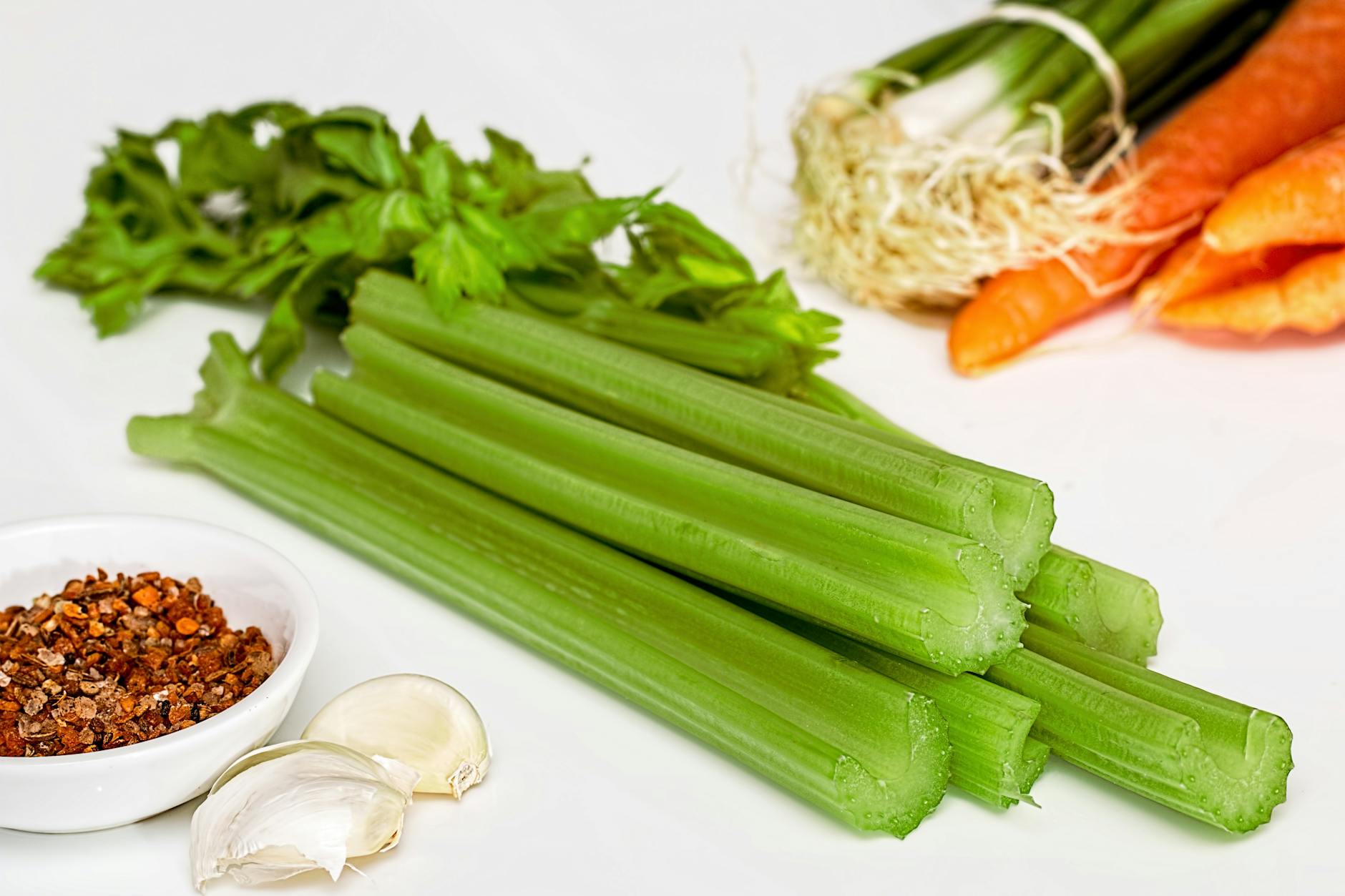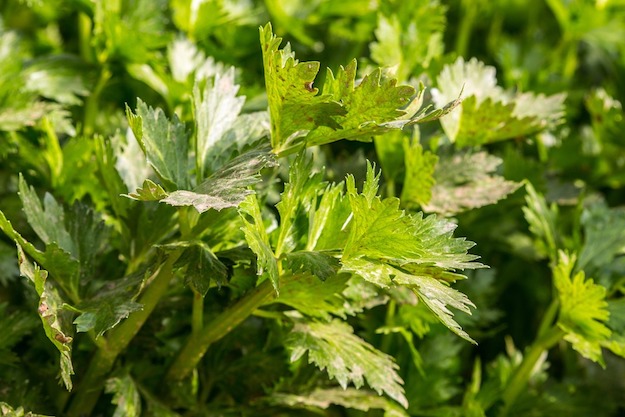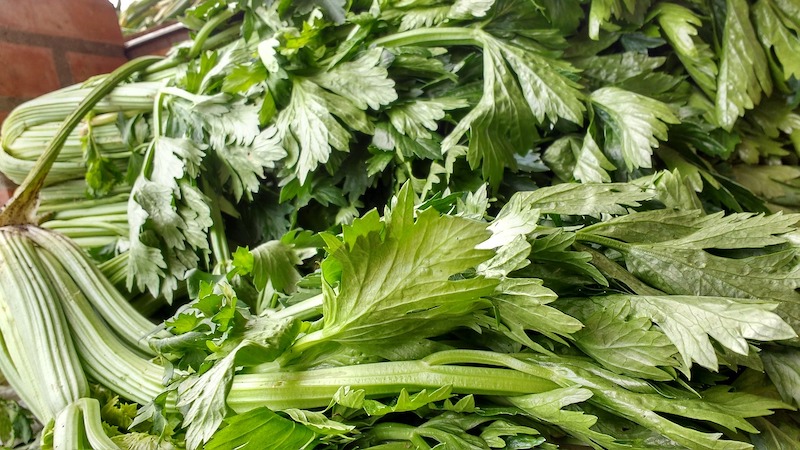Growing celery can be challenging, but we definitely wouldn’t want to miss out on growing this healthy pantry staple this spring. Let’s get to growing our own fresh supply of organic celery with these three options and smart growing tips!
Growing Celery For Fresh And Healthy Organic Veggies
Did you know celery was listed among the ‘dirty dozen’ of 2017? These are fruits and vegetables which are widely grown non-organically and are therefore grown with synthetic fertilizers and pesticides. According to toxicaction.org, pesticides can be attributed to human health problems, from short-term effects such as headaches, to long-term effects such as cancer! With that said, wouldn’t you care to grow your own fresh and free celery? These tips and guide will see you through and you wouldn’t have to buy “dirty” celery again!
When, Where, And What Celery Variety To Grow

Celery is a cool season vegetable which is ideally grown in early spring or late summer depending on your hardiness zone. It would be helpful to note that celery originated in marshlands and is, therefore, a thirsty and a heavy feeding vegetable. However, even if celery might be a cool season veggie and a thirsty one at that, it still prefers a sunny spot even when germinating.
There are three types of celery: celeriac with an edible rounded root, the cutting or leaf celery, and the stalk celery which is what we usually see in the market. Even celery has its red counterpart and since the stalk celery or Pascal celery is the most common type, it’s good to try the Tall Utah variety for their long stalks.
How To Grow Celery From Seeds
To grow celery successfully could be your ultimate vegetable gardening challenge, but one that is well-worth your effort. Whether you decide to grow celery outdoors, indoors or both, you have to start them from seeds. Patience is needed to grow celery as they can take longer to germinate and mature. For spring planting, start seeds indoors 8 to 10 weeks before the last frost date in your zone.
- Prepare organic and biodegradable seed pots which are at least 3 inches deep for convenience in transplanting later.
- Fill the seed starting pots with organic compost or rich potting soil.
- Celery seeds are quite tiny, you can mix them with sand first.
- Try to drop a few seeds in each cell of your seed-starting pot or spread it evenly in a flat seed-starting container.
- Cover the seeds with a thin layer of compost since the seeds prefer to be planted closer to the soil surface.
- Keep the soil moist and place it under grow lights in an area penetrated by sunlight.
- Transplant seedlings when they’ve grown at least one true leaf in individual pots to give them more room to grow.
How To Transplant Celery Outdoors
Your seedlings are ready for transplant once the temperature outside has remained above 50 F. or 10 C. Prepare your plant bed with a humus loam soil rich in organic matter. A soil rich in phosphorus is also ideal when growing celery. Situate your plant bed in an area where it receives at least 6 hours of morning sun and where it can be shielded from harsh afternoon sun.
- Dig holes in your plant bed at least 10 to 12 inches apart, wide and deep enough to fit in the celery root ball or the whole biodegradable seed pot.
- Plant the seedlings, packing the soil around each plant, then cover the spaces between each plant with mulch to keep it weed-free and moist.
- Keep it evenly and consistently moist by putting a drip irrigation system in your plant bed, preferably before planting the celery seedlings.
Celery Pest Management

What makes celery listed in the dirty dozen foods is the abundance of pesticides used to grow them. Celery can be plagued by a number of pests but growing celery at home will allow you to do away with pests naturally. Companion planting is one method, where you grow plants that grow well with celery, like cabbages, allium vegetables, and spinach. Spring flowers such as daisies and snapdragons will best accompany your celery by inviting beneficial insects to prey on celery pests. You can also provide additional pest control with barriers such as nets or row covers on your plant group.
More Tips For Growing Celery
Celery tends to be bitter and stringy when left dry and exposed to harsh sunlight. Always keep your soil evenly moist with drip irrigation and mulching. You can also blanch celery, which is basically wrapping the stalks with paper a week before harvest. This will shield the stalks from the sun to produce sweeter and lighter stalks. Heavily water your celery plants a day before harvest to improve its flavor.
Growing Celery Indoors
Growing celery indoors is possible by growing them in containers. By growing in containers, you eliminate gardening problems such as weeds and pest and you can grow them even in winter. Growing them indoors will most probably give you better-tasting celery during harves,t since you can control sun exposure.
- Start celery seeds as instructed above.
- Prepare containers and fill it with rich organic soil about halfway.
- Place the seedling in the container then add more soil without burying the roots too deeply.
- Water the plant with compost tea to establish it and keep it moist, never letting it dry.
Growing Celery From Scraps
So you want to skip all those steps and get straight to harvesting as soon as possible? Then try growing celery from scraps. It’s one of the food you can easily regrow from the plant parts you would have otherwise discarded.
- Leave at least 3 inches of a fresh celery base after cutting off the stalks.
- Place the stump in a bowl then fill it with warm water just enough so that the celery stump gets covered.
- Leave the stump to soak in the bowl overnight to encourage root growth.
- Prepare a growing area with sufficient water supply, sunlight, and rich soil.
- Dig a hole wide enough to fit the stump then plant away!
Watch this video for more helpful tips to growing celery from seeds:
Celery is a staple at home and it’s mostly prepared fresh for salads or in a green smoothie. So I really prefer them fresh, organic, and home-grown. Knowing the perks of growing fresh celery, I bet you’re on your way to growing this zesty and peppery vegetable now. Take this challenge to grow celery, and growing every other vegetable will be easy-peasy from here on out!
Which among the three options for growing celery will you try to take on? Share your thoughts in the comments section below.
Care to try growing asparagus from seeds this spring season? Harvest may take longer but it sure is worth it!
Don’t forget to follow us on Facebook, Instagram, Pinterest, and Twitter for more smart gardening ideas!



